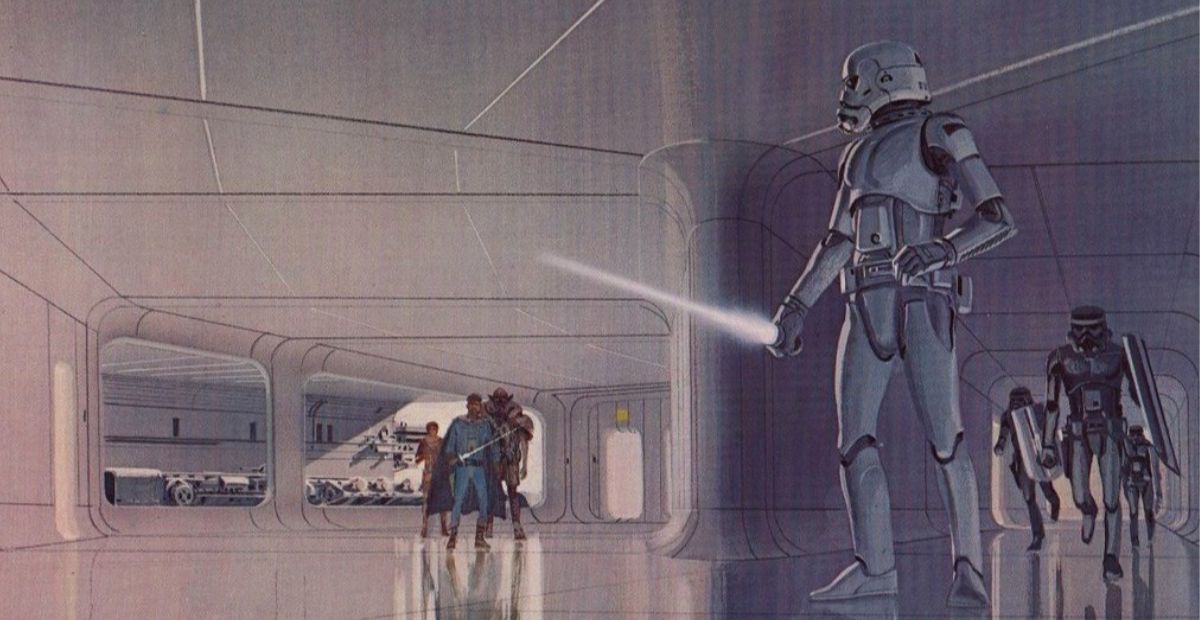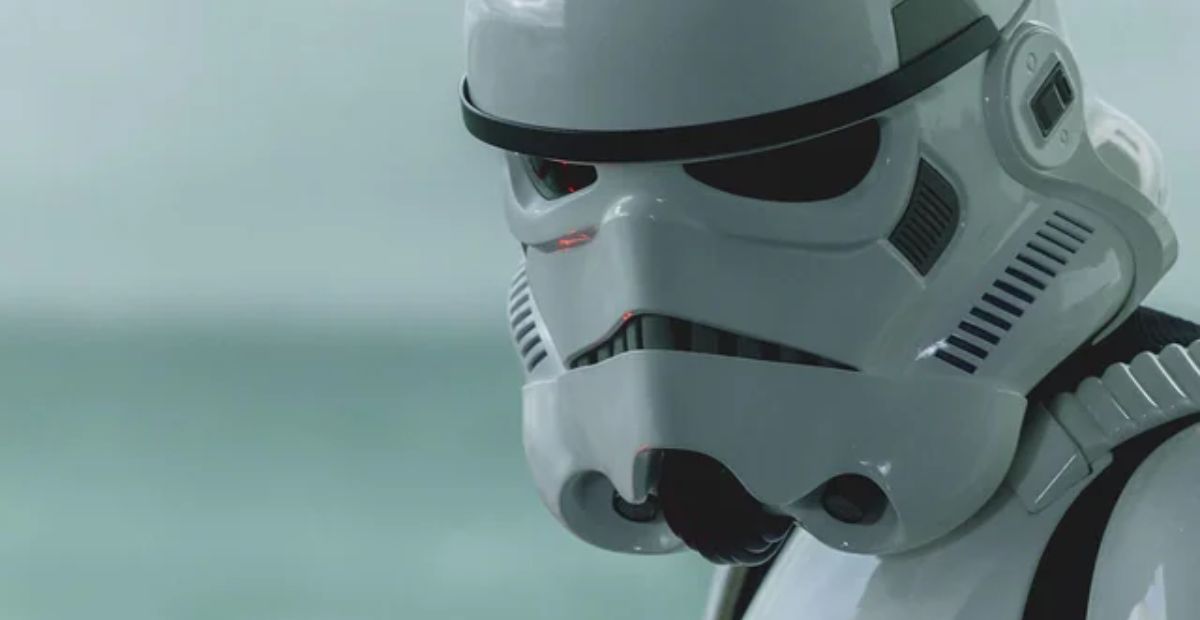If you’ve ever wondered who designed the Imperial Stormtrooper armor, I’ve got the quick answer for you.
It was a team effort by George Lucas, Ralph McQuarrie, John Mollo, and sculptors Liz Moore (helmet) and Brian Muir (body armor) that brought the armor to life for the Original Trilogy.
But listing names seems like it misses the real fun of the story.
Here’s the full story of how the Stormtrooper armor came to be.
“The Stormtrooper Costume Was the Brainchild of Lucas and Ralph McQuarrie”
In the early stages of development, George Lucas and Ralph McQuarrie had a clear vision for how stormtroopers should be portrayed in Star Wars.
According to Star Wars Costumes: The Original Trilogy (2014), Lucas and McQuarrie envisioned them as “totally obedient; the ultimate soldier, without any feeling at all. If they were given an order, they did it. So they were better off being these people without expression.”
With this concept in mind, McQuarrie began sketching the first designs of the stormtroopers, starting with pencil drawings. He later brought the vision to life in production paintings, including a stormtrooper wielding a lightsaber.

McQuarrie also experimented with varying designs for the helmets. As he shared in the book, “I had the officer’s helmets a somewhat different shape than the standard trooper. The trooper’s helmet had a metal-colored top, and a more symmetrical look to it. The officer’s helmet was formed more like a skull.”
The Process of Sculpting the Stormtrooper’s Armor
After finalizing the sketches, the next step was to bring the Stormtrooper armor to life in three dimensions. This meant transforming McQuarrie’s concept art into physical form through detailed sculpting work.
Brian Muir and Liz Moore divided the work of sculpting the stormtrooper armor between them.
John Mollo, in Star Wars Costumes: The Original Trilogy (2014), described the process: “We got in a model of suitable size and did a plaster cast of his body. The sculptor in the studio then modeled the armor in clay over the figure. Everybody used to go in and say, ‘Well, take some clay off here, take some off there.’ This went on for several weeks.”
Brian Muir handled the sculpting of the stormtrooper’s body armor and encountered some challenges along the way.
Muir shared, “The only thing that wasn’t done from Ralph’s original concepts was the back of the costume because there was no concept art to show it. I just had a single sketch to go by.”
He further explained, “Each component was sculpted on its own, with a gap between each one, because it had to fit anyone from 5’10” to 6’0”. The only way to make that work was to have a gap between components, and if someone was bigger, the gap would increase; if they were smaller, it would close up.”
The helmet was sculpted separately, as Liz Moore continued working on it remotely after leaving the studio in January 1976 to spend time in Holland.
Once the sculpting process was finished, the team began creating the armor pieces. Refined patterns served as guides for vacuum-forming the final components. This technique uses heated plastic sheets that are molded tightly over a design by applying vacuum pressure.
The Production of Stormtrooper Armor
According to originalstormtrooper.com, the creation of the iconic Stormtrooper armor began in 1976, in Twickenham, England, where scenic artist Nick Pemberton and industrial designer Andrew Ainsworth operated near one another.
Nick was approached by the Star Wars production team to create helmets and props for the film. Despite the project’s modest budget and initial skepticism, Nick collaborated with costume designer John Mollo and concept artist Ralph McQuarrie to develop mock-ups, including a red clay Stormtrooper helmet.
On January 20, 1976, Nick presented his clay model to George Lucas during a meeting at the studios. Lucas reviewed Nick’s design alongside another helmet sculpted in grey clay by Liz Moore, but ultimately chose Nick’s concept to move forward. With this approval, Nick enlisted Andrew Ainsworth at Shepperton Design Studios to bring the Stormtrooper armor to life.
Andrew worked from Nick’s red clay model and McQuarrie’s concept art, sculpting molds using his custom resin-and-metal composites. To ensure the helmets were durable and flexible, he used high-density polyethylene (HDPE).
This material allowed for efficient molding but presented challenges, such as shrinkage and difficulty in painting. Andrew also experimented with “blister eyes” for the helmets, creating a menacing appearance, though the distorted vision required adjustments to simpler green acetate lenses.
The first batch of 27 HDPE helmets was rushed to Tunisia for the film’s desert scenes. Due to time constraints, these helmets varied in size and shape. Later, a second, more refined batch of helmets and armor, made from white ABS plastic, was produced. While ABS provided a sleeker appearance, it was less durable than HDPE and prone to breaking during filming.
Andrew’s vacuum-forming process, which involved heating plastic sheets and molding them over patterns, enabled the efficient production of both helmets and armor. Over time, the armor’s design was refined to ensure stunt performers could move comfortably, with integrated features like audio systems and a slick, futuristic aesthetic.
By the end of production, Andrew had created 50 sets of Stormtrooper armor, which were reused throughout A New Hope and its sequels.
Despite the challenges of tight deadlines and a limited budget, the collaboration between Lucas, Pemberton, Ainsworth, and other artists resulted in the creation of one of the most iconic costumes in cinematic history.

